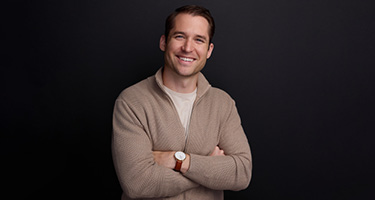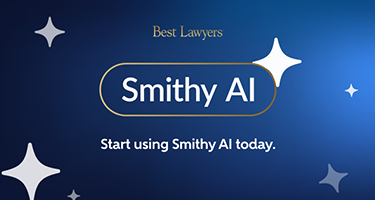9 No. 11 Westlaw Journal Bankruptcy 1
Westlaw Journal Bankruptcy *1
September 27, 2012
Commentary
John B. Butler III, Esq.aa1
Copyright © 2012 Thomson Reuters .
CHAPTER 13 REORGANIZATION: THE IMPACT OF THE ‘HANGING PARAGRAPH’ ON LOANS SECURED BY AUTOMOBILES
Attorney John B. Butler III discusses how the treatment of secured automobiles has changed since the passage of the Bankruptcy Abuse Prevention and Consumer Protection Act.
One of the major changes wrought by the Bankruptcy Abuse Prevention and Consumer Protection Act of 2005 was the addition of an unnumbered paragraph to 11 U.S.C. § 1325, the section dealing with confirmation of a Chapter 13 plan. This paragraph is often referred to as the “hanging paragraph.”1
In an environment of rapidly changing case law, this article will attempt to focus on the essential elements of the hanging paragraph with respect to the 910-day purchase-money security interest in a motor vehicle and various cases interpreting the paragraph.
Importance of the hanging paragraph
Why is it important to determine whether a security interest is within the scope of the hanging paragraph? Prior to the enactment of the hanging paragraph, a Chapter 13 debtor could, almost with impunity, value a claim secured by an automobile, unless the court found the timing of the purchase of the car and the bankruptcy filing were so immediate as to be an indication of bad faith on the debtor's part.
For example a $20,000 debt secured by a purchase money-security interest on a two-year-old automobile in fair condition with a replacement value of $12,000 could be “crammed down” and bifurcated so the secured claim, which had to be paid in full with interest, was only $12,000. The remaining $8,000 of the original debt could be treated as an unsecured claim and paid pro rata with other unsecured claims like medical bills, signature loans and credit card bills at one percent or whatever percentage other unsecured debts were being paid. This treatment would leave the secured creditor with a shortfall of up to $7,200 if the unsecured portion was only paid at one percent.
Now, a debt subject to the protection of the hanging paragraph may not be split into secured and unsecured components based on the value of the collateral. In bankruptcy parlance, the debt may not be “crammed down” on the creditor, and the entire secured claim must be paid in full with the appropriate rate of interest.2
Is there an allowed secured claim?
To be within the scope of the hanging paragraph, the claim involved must not be an “allowed claim” but an “allowed secured claim,” which is secured by property of the bankruptcy estate and has been properly perfected.3
Is the claim secured by a motor vehicle?
The allowed secured claim must be secured by a “motor vehicle as defined in Section 30102 of Title 49” of the United States Code, which states in pertinent part, “‘[M]otor vehicle’ means a vehicle driven or drawn by mechanical power and manufactured primarily for use on public streets, roads and highways, but does not include a vehicle operated only on a rail line.”
*2 One court held a travel trailer was not a “motor vehicle” within the scope of the hanging paragraph, saying, “The plain meaning of ‘primarily’ is ‘chief’ or ‘foremost’, and in this court's view, the debtor's trailer was manufactured primarily to provide temporary shelter for persons, not to traverse the public streets, roads and highways.”4
Is the motor vehicle for personal use of the debtor?
One issue which immediately arises is whether the vehicle subject to the purchase-money security interest is for the “personal use of the debtor.” The issues in this determination include whether the vehicle is for the use of the debtor or a non-debtor spouse and whether the vehicle is for business or personal use.
The motor vehicle must be for the “personal use” of the debtor and not a non-debtor party, even if it is the debtor's spouse.
The term “personal use” is not defined by the bankruptcy code. Following the passage of the BAPCPA, various tests have been used to determine whether a vehicle was acquired for the personal use of a Chapter 13 debtor.
Some courts interpret “personal use” to mean merely non-business use.5 Other courts determine “personal use” based upon the totality of the circumstances but find a vehicle is not acquired for personal use if it allows the debtor to make a “significant contribution” to the family income.6
Yet other courts use a variation of this test, deeming the “personal use” requirement of the hanging paragraph to be satisfied if the personal use of the debtor is significant and material, regardless of whether there is also some business use of the vehicle by the debtor.7
These courts focus on factors such as:
- Testimony from the debtor about intended use.
- The debtor's actual personal use of the vehicle.
- Any designation of personal use provided by the parties' contract.
- Who makes payments on the vehicle.8
If the motor vehicle was acquired for business use by the debtor, then the hanging paragraph does not apply at all, and the claim is subject to bifurcation as discussed above. In the examination of whether the vehicle was acquired for business or personal use, courts often apply many of the same factors used for determining whether the vehicle is being used by the debtor or some other person.9
Is the security interest a purchase-money security interest?
To be protected by the hanging paragraph, the allowed secured claim must be secured by a purchase-money security interest.10 The issue of whether a security interest is actually a purchase-money security interest has sparked nationwide controversy.
Issues as to the purchase-money nature of the security interest include whether:
- Financing of negative equity on a traded-in vehicle destroys the purchase-money security interest. • Inclusion of the price of extended warranty and certain types of insurance in the amount financed renders the security interest non-purchase-money.
- Refinancing of the debt destroys the purchase-money security interest.
*3 In applying the hanging paragraph to determine the amount of the secured claim, some courts adopt the “transformation rule.” This means if the loan contains both purchase-money and non-purchase-money components, the entire loan is transformed into a non-purchase-money security interest.
Other courts adopt the “dual status rule,” holding a loan containing purchase-money and non-purchase-money components may be split into its purchase-money and non-purchase-money parts. Moreover, the purchase-money portion will not be subject to valuation under 11 U.S.C. § 506.11 Under the dual status rule, however, the non-purchase-money portion of the debt will not be given protected status and is subject to being reduced to the value of the collateral.12
Whether a court applies the transformation rule or the dual status rule becomes especially important when deciding whether items like negative equity from a traded-in vehicle, guaranteed auto protection insurance, or extended warranties are part of the purchase price of the vehicle and therefore part of the purchase-money portion of the loan.
Under the transformation rule, items such as negative equity, extended warranty or GAP insurance (which are not found to be part of the purchase price of the vehicle) would transform the entire security interest into a non-purchase-money security interest, which could be bifurcated into secured and unsecured claims according to the value of the collateral. If the court follows the dual status rule, the purchase-money portion of the loan is protected from valuation, while the non-purchase-money portion is subject to being rendered unsecured depending on the value of the collateral.
Was negative equity included in the debt?
One main debate is whether adding the negative equity (unpaid loan balance on a vehicle which was traded in by the debtor) to the amount of the purchase price of the new vehicle being financed destroys the purchase-money nature of the security interest. Some courts hold negative equity is part of the purchase price of the new vehicle or that the financing of the negative equity permitted the debtor to acquire rights in the new vehicle. Therefore, the financing of the negative equity is a valid component of the purchase-money security interest and protected by the hanging paragraph.13
Other courts hold negative equity is not a part of the purchase price of the vehicle and is therefore not part of the purchasemoney obligation protected by the hanging paragraph.14
Was GAP insurance included in the debt?
Another issue with respect to whether the security interest is purchase-money in nature is whether the inclusion of guaranteed auto protection insurance premiums destroys the otherwise purchase-money nature of the loan. GAP is insurance designed to pay the difference between what a debtor owes on a vehicle and what it is worth, in the event it is wrecked or stolen.
*4 Some courts hold GAP insurance is part of the purchase of the vehicle and so part of the purchase-money loan.15 Other courts exclude GAP insurance premiums from the purchase-money security interest and thus from the protection of the hanging paragraph.16
Was an extended warranty included in the debt?
Some courts hold the portion of the vehicle loan attributable to extended warranty premiums is entitled to purchase-money status.17 Other courts hold such charges are not part of the purchase price of the car and are not entitled to the protection of the hanging paragraph.18
May the terms of the purchase-money security agreement be modified?
Yet another issue arising in the context of the purchase-money protection provision is whether the protection of the hanging paragraph from bifurcation of the secured claim permits modification of the claim by changing the term of the loan, the monthly payment or the interest rate.
Most courts hold the protection of the hanging paragraph, while prohibiting bifurcation of the purchase-money claim, does not prevent modification of the other portions of the debt. Therefore, while the debtor must pay for the entire amount of the secured claim over the term of the Chapter 13 plan, the monthly payment and interest rate may be changed.19
In spite of the debtor's ability to modify parts of the claim other than the value, most courts20 hold that, while the secured claim need not be paid at the contractual interest rate, the claim must be paid interest on the entire secured claim at the prime rate plus some measure of risk rate as set forth in Till v. SCS Credit Corp., 541 U.S. 465 (2004).21
Conclusion
While the addition of the hanging paragraph was intended to greatly increase the protection of purchase-money automobile loans in Chapter 13 cases, and does so in many, the issues discussed above create pitfalls for the unwary practitioner.
Footnotes
1 For purposes of paragraph (5), Section 506 shall not apply to a claim described in that paragraph if the creditor has a purchase money security interest securing the debt that is the subject of the claim, the debt was incurred within the 910 days preceding the date of the filing of the petition, and the collateral for that debt consists of a motor vehicle (as defined in Section 30102 of Title 49) acquired for the personal use of the debtor, or if collateral for that debt consists of any other thing of value, if the debt was incurred during the one-year period preceding that filing.
2 See Nuvell Credit Corp. v. Westfall (In re Westfall), 599 F.3d 498, 501 (6th Cir. 2010); Ford Motor Credit Co. v. Dale (In re Dale), 582 F.3d 568, 575 (5th Cir. 2009); Nuvell Credit Co., LLC v. Callicott (In re Callicott), 580 F.3d 753, 754 (8th Cir. 2009); Ford v.
Ford Motor Credit Corp. (In re Ford), 574 F.3d 1279, 1285 (10th Cir. 2009); Wells Fargo Fin. Acceptance v. Price (In re Price), 562 F.3d 618, 623 (4th Cir. 2009); Nuvell Fin. Servs. Corp. v. Dean (In re Dean), 537 F.3d 1315 (11th Cir. 2008); Trejos v. VW Credit Inc. (In re Trejos), 374 B.R. 210 (B.A.P. 9th Cir. 2007); Daimler Chrysler Servs. v. Taranto (In re Taranto), 365 B.R. 85, 88 (B.A.P. 6th Cir. 2007).
3 See In re Lewis, 363 B.R. 477 (Bankr. D.S.C. 2007); In re White, 352 B.R. 633, 643 (Bankr. E.D.La. 2006).
4 In re Green, 360 B.R. 34, 42 (Bankr. N.D.N.Y. 2007).
5 See In re Grimme, 371 B.R. 814, 816 (Bankr. S.D. Ohio 2007); In re Lowder, 2006 WL 1794737 at 3-4 (Bankr. D. Kan. 2006) (driving to and from work was not business use).
6 See In re Martinez, 363 B.R. 525, 527 (Bankr. S.D. Tex. 2007); In re Hill, 352 B.R. 69 (Bankr. W.D. La. 2006).
7 See In re Bethoney, 384 B.R. 24, 30 (Bankr. D. Mass. 2008); In re Matthews, 378 B.R. 481, 489 (Bankr. D.S.C. 2007); In re Cross, 376 B.R. 641, 646 (Bankr. S.D. Ohio 2007); In re Phillips, 362 B.R. 284, 305 (Bankr. E.D. Va. 2007); In re Wilson, 2006 WL 3512921 at 3 (Bankr. D. Kan. 2006); In re Solis, 356 B.R. 398, 409 (Bankr. S.D. Tex. 2006).
8 See In re Matthews, 378 B.R. at 489; In re Smith, 2007 WL 1577668 at 4 (Bankr. S.D. Tex. 2007); In re Lorenz, 368 B.R. 476, 485 (Bankr. E.D. Va. 2007).
9 See Powell v. Clark (In re Powell), 423 B.R. 862 (C.D. Ill. 2010); In re LaDeaux, 373 B.R. 48 (Bankr. S.D. Ohio 2007); In re Garrison, 2007 WL 1589554 (Bankr. D. Alaska 2007); In re Andoh, 370 B.R. 377 (Bankr. D. Colo. 2007); Sovereign Bank v. Finnegan (In re Finnegan), 358 B.R. 644 (Bankr. M.D. Pa. 2006).
10 U.C.C. § 9-103 provides:
In this section:
“purchase-money collateral” means goods ... that secure[] a purchase-money obligation incurred with respect to that collateral, and “purchase-money obligation” means an obligation of an obligor incurred as all or part of the price of the collateral or for value given to enable the debtor to acquire rights in or the use of the collateral if the value is in fact so used.
A security interest in goods is a purchase-money security interest: to the extent that the goods are purchase-money collateral with respect to that security interest.
11 11 U.S.C. § 506(a) states in pertinent part, “An allowed claim of a creditor secured by a lien on property in which the estate has an interest, or that is subject to set-off under section 553 of this title, is a secured claim to the extent of the value of such creditor's interest in the estate's interest in such property, or to the extent of the amount subject to set-off, as the case may be, and is an unsecured claim to the extent that the value of such creditor's interest or the amount so subject to set-off is less than the amount of such allowed claim.”
12 See In re Johnson, 380 B.R. 236, 248 (Bankr. D. Or. 2007); In re Burt, 378 B.R. 352, 359 n. 34 (Bankr. D. Utah 2007); In re Petrocci, 370 B.R. 489, 504 (Bankr. N.D.N.Y. 2007).
13 See In re Westfall, 599 F.3d at 503; In re Dale, 582 F.3d at 575; Ford Motor Credit Co. v. Mierkowski (In re Mierkowski), 580 F.3d 740, 743 (8th Cir. 2009); In re Ford, 574 F.3d at 1285; In re Price, 562 F.3d at 621; Graupner v. Nuvell Credit (In re Graupner), 537 F.3d 1295, 1303 (11th Cir. 2008).
14 See Americredit Fin. Servs. v. Penrod (In re Penrod), 611 F.3d 1158, 1162 (9th Cir. 2010) cert. denied, 132 S. Ct. 108 (2011); In re Crawford, 397 B.R. 461 (Bankr. E.D. Wis. 2008); In re Busby, 393 B.R. 443 (Bankr. S.D.Miss. 2008); In re Look, 383 B.R. 210 (Bankr. D. Me. 2008); In re Johnson, 380 B.R. 236 (Bankr. D. Or. 2007); In re Mitchell, 379 B.R. 131 (Bankr. M.D. Tenn. 2007).
15 See In re Dale, 582 F.3d at 575; In re Price, 562 F.3d at 628; In re Weiser, 381 B.R. 263 (Bankr. W.D. Mo. 2007); In re Macon, 376 B.R. 778, 782 (Bankr. D.S.C. 2007); In re Brown, 346 B.R. 246, 251 (Bankr. M.D. Ga. 2006).
16 See In re Munzberg, 388 B.R. 529 (Bankr. D. Vt. 2008); In re Honcoop, 377 B.R. 719 (Bankr. M.D. Fla. 2007); In re White, 352 B.R. 633, 639 (Bankr. E.D. La. 2006).
17 In re Dale, 582 F.3d at 575; In re Weiser, 381 B.R. 263; In re Macon, 376 B.R. at 782; In re Murray, 352 B.R. 340, 349 (Bankr. M.D. Ga. 2006); In re Brown, 346 B.R. at 251.
18 See In re Munzberg, 388 B.R. 529; In re White, 352 B.R. at 639.
19 See In re Taranto, 365 B.R. 85; In re Velez, 431 B.R. 567 (Bankr. S.D.N.Y. 2010); In re Riley, 428 B.R. 757 (Bankr. N.D. Ohio 2010); In re Bufford, 343 B.R. 827 (Bankr. W.D. Tex. 2006); In re Soards, 344 B.R. 829 (Bankr. W.D. Ky. 2006); In re Brown, 339 B.R. 818 (Bankr. S.D. Ga. 2006); In re Fleming, 339 B.R. 716 (Bankr. E.D. Mo. 2006); In re Johnson, 337 B.R. 269 (Bankr. M.D.N.C. 2006); In re Wright, 338 B.R. 917 (Bankr. M.D. Ala. 2006); In re Desardi, 340 B.R. 790 (Bankr. S.D. Tex. 2006).
20 See Wachovia Dealer Servs. v. Jones (In re Jones), 530 F.3d 1284 (10th Cir. 2008); Drive Fin. Servs. v. Jordan, 521 F.3d 343 (5th Cir. 2008); In re Morris, 370 B.R. 796 (E.D. Wis. 2007); In re Wilson, 374 B.R. 251 (B.A.P. 10th Cir. 2007); In re Burt, 378 B.R. 352; In re Henry, 353 B.R. 261 (Bankr. D. Or. 2006); In re Murray, 352 B.R. 340; In re Brown, 339 B.R. at 822; In re Fleming, 339 B.R. 716; In re Desardi, 340 B.R. 790; compare In re Dean, 537 F.3d at 1320 n. 5 (“[W]e need not, and do not, decide whether the Till rate of interest must apply to 910-claims, as opposed to the contract rate of interest.”); In re Leath, 389 B.R. 494 (Bankr. E.D. Tex. 2008).
21 See In re Jones, 530 F.3d 1284; Drive Fin. Servs., 521 F.3d 343; In re Morris, 370 B.R. 796 (E.D. Wis. 2007); In re Wilson, 374
B.R. 251 (B.A.P. 10th Cir. 2007); In re Burt, 378 B.R. 352; In re Henry, 353 B.R. 261 (Bankr. D. Or. 2006); In re Murray, 352 B.R.
340; In re Brown, 339 B.R. at 822 In re Fleming, 339 B.R. 716; In re Desardi, 340 B.R. 790; compare, In re Dean, 537 F.3d at 1320 n. 5; In re Leath, 389 B.R. 494.
aa1 John B. Butler III was law clerk to U.S. Bankruptcy Judge J. Bratton Davis, a standing Chapter 13 trustee for 15 years and an adjunct professor of bankruptcy law at the University of South Carolina School of Law. He is the author of the two-volume “Bankruptcy Handbook” published by Knowles Publishing and specializes in representing creditors in bankruptcy cases in South Carolina.

















